Writing System
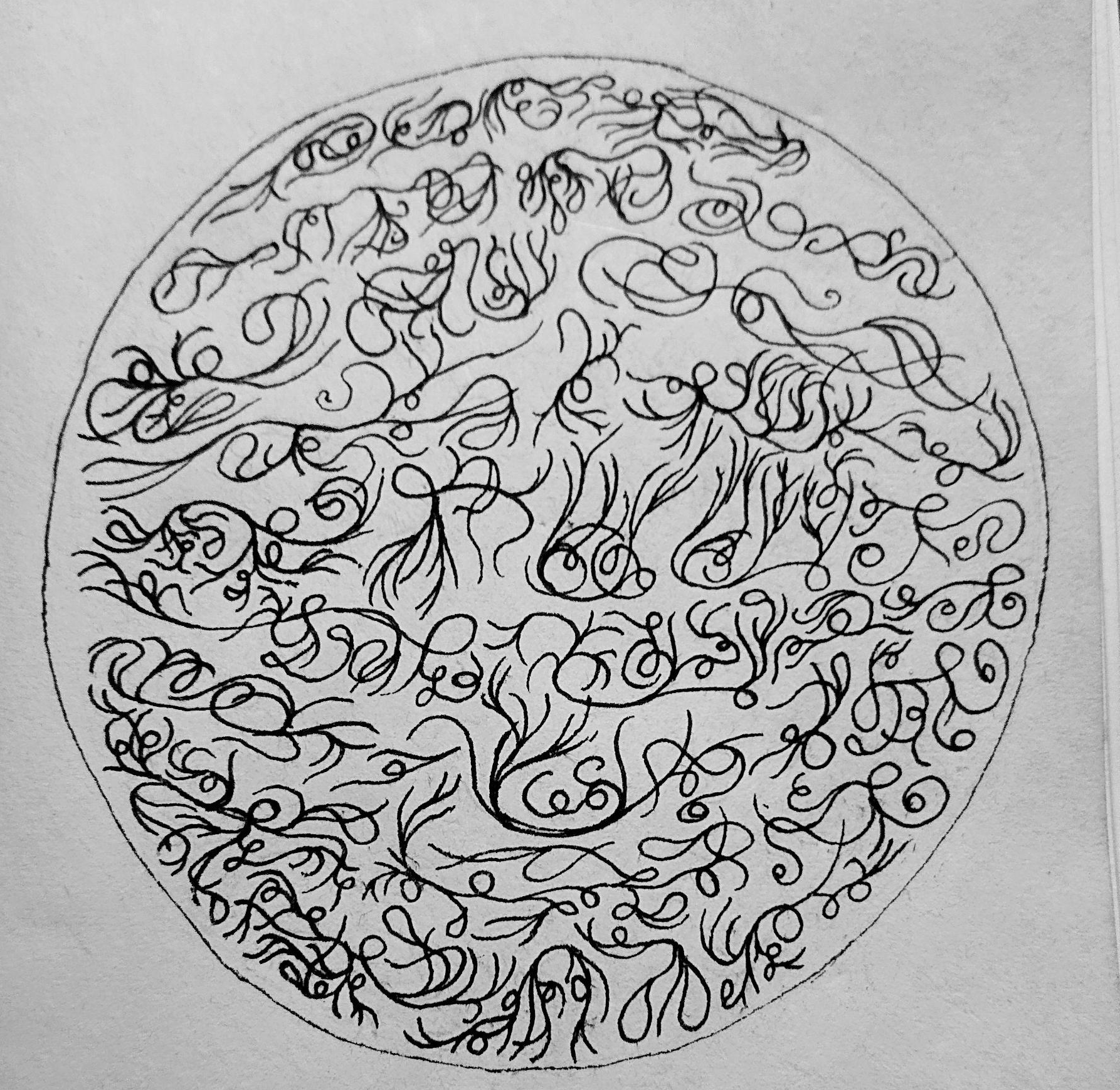
Latin alphabet writing system
| IPA | ɸ | β | f | v | θ | ð | ʃ | ʒ | s | z | ɮ | x | ɣ | χ | j | ɻ | i | u | ʌ | n |
| Latin | p | b | f | v | t | n | 5 | 3 | s | z | l | k | g | h | y | r | i | u | o | n |
Tentacular Abjad
Inverse of normal abjad - vowels are main body of writing; consonants are diacritics.
Vowels
Vowels form the main body of each word. Words are represented by one connected group of tentacles.
| ipa | latin | tentaculary |
|---|---|---|
| i | i | a tentacle sweeping upward |
| u | u | a tentacle sweeping downward |
| ʌ | o | a flat tentacle |
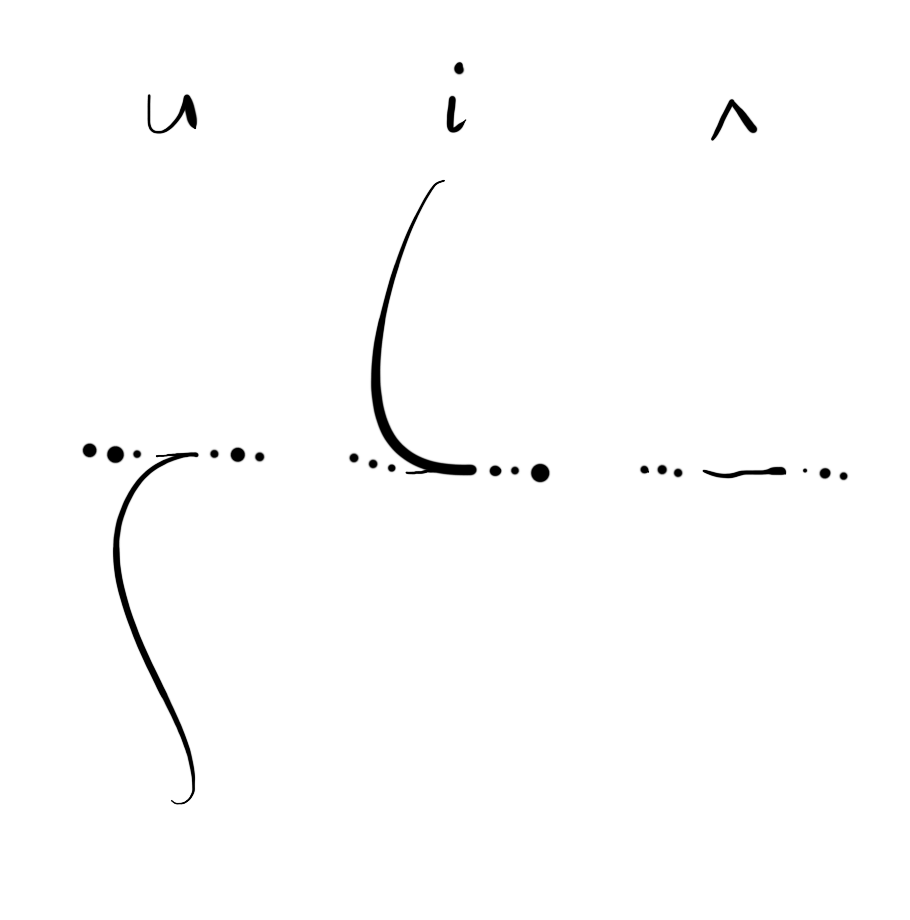
Vowels are the thickest tentacles in a word. Loops in vowels are most often ornamental.
Consonants
Consonants are tentacles that branch off of their root vowels.
A consonant on the left (u/i) or top (o) of its vowel comes prior to the vowel (the onset of the syllable). A consonant on the right (u/i) or bottom (o) of its vowel comes after the vowel (the coda of the syllable).
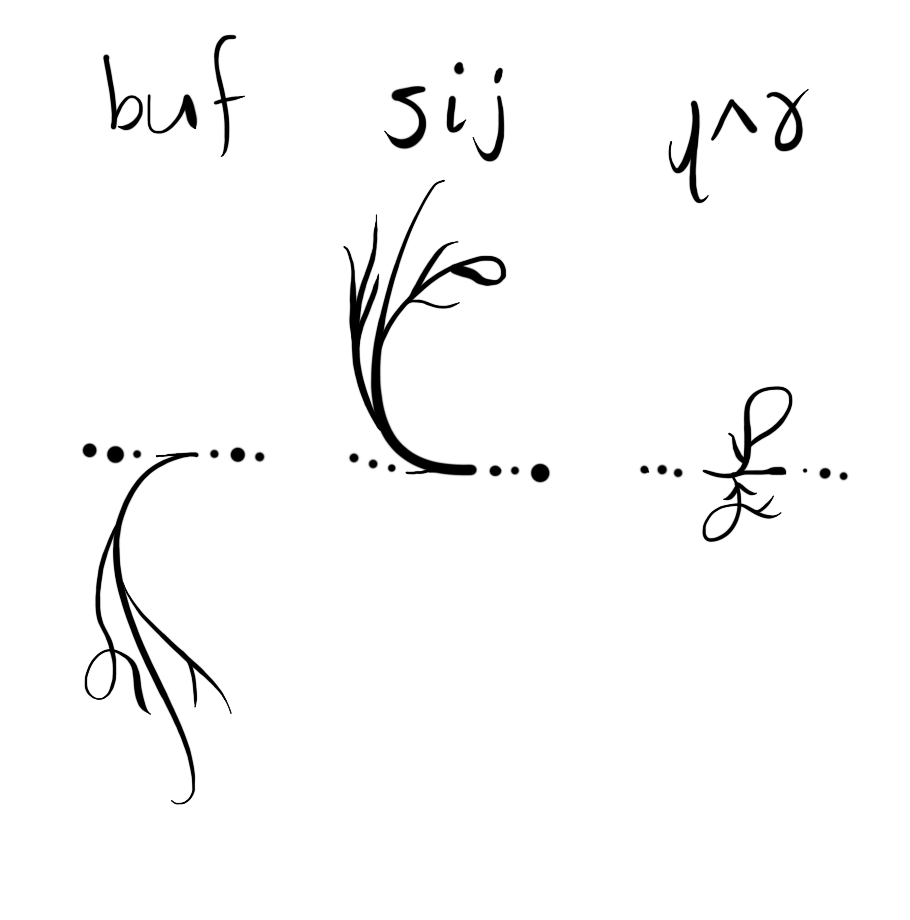
1: a plain tentacle branching off the vowel.
2: a tentacle that splits into two tentacles.
L: a tentacle terminating in a loop (no trailing tip).
X': a self-looping tentacle.
XY: a tentacle composed of an X followed by a Y.
| ipa | latin | tentaculary |
|---|---|---|
| ɸ | p | 1 |
| β | b | 1’ |
| f | f | 11 |
| v | v | 1’1 |
| θ | t | 2 |
| ð | d | 2’ |
| ʃ | 5 | 12 |
| ʒ | 3 | 1’2 |
| s | s | 21 |
| z | z | 2’1 |
| x | k | 22 |
| ɣ | g | 2’2 |
| ɮ | l | L |
| χ | h | L’ |
| ɻ | r | 1L |
| j | y | 2L |
| n | n | 2L’ |
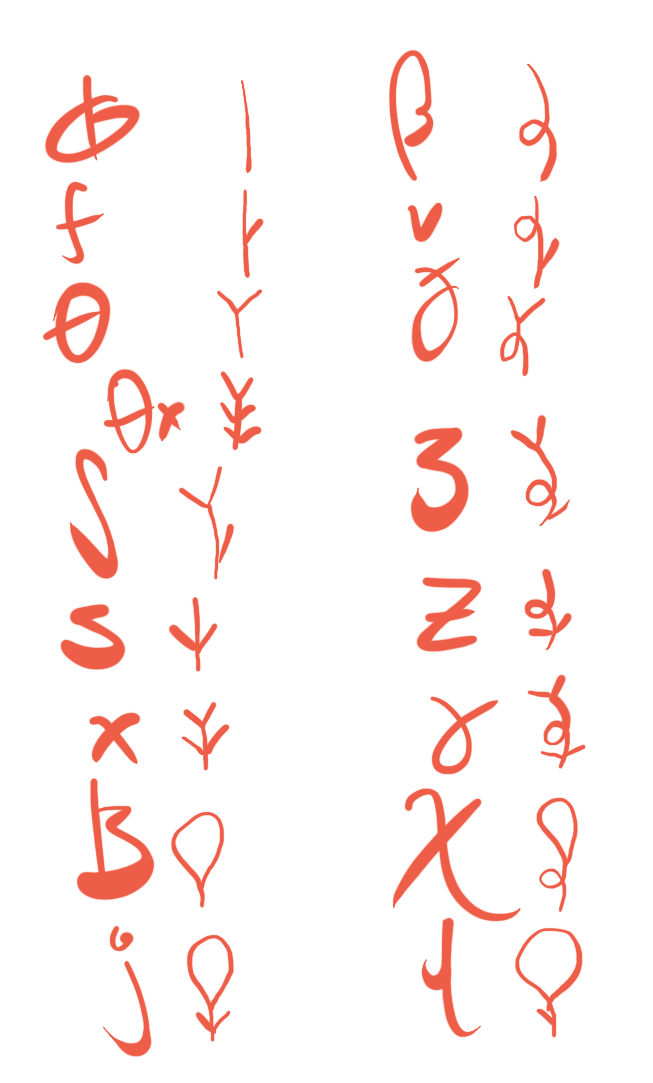
Examples
The syllables have been hyphenated to assist you in seeing the breakdown.
lugso gu5lidso sotso
blood-GEN deity_intelligent-PL-GEN thought-GEN
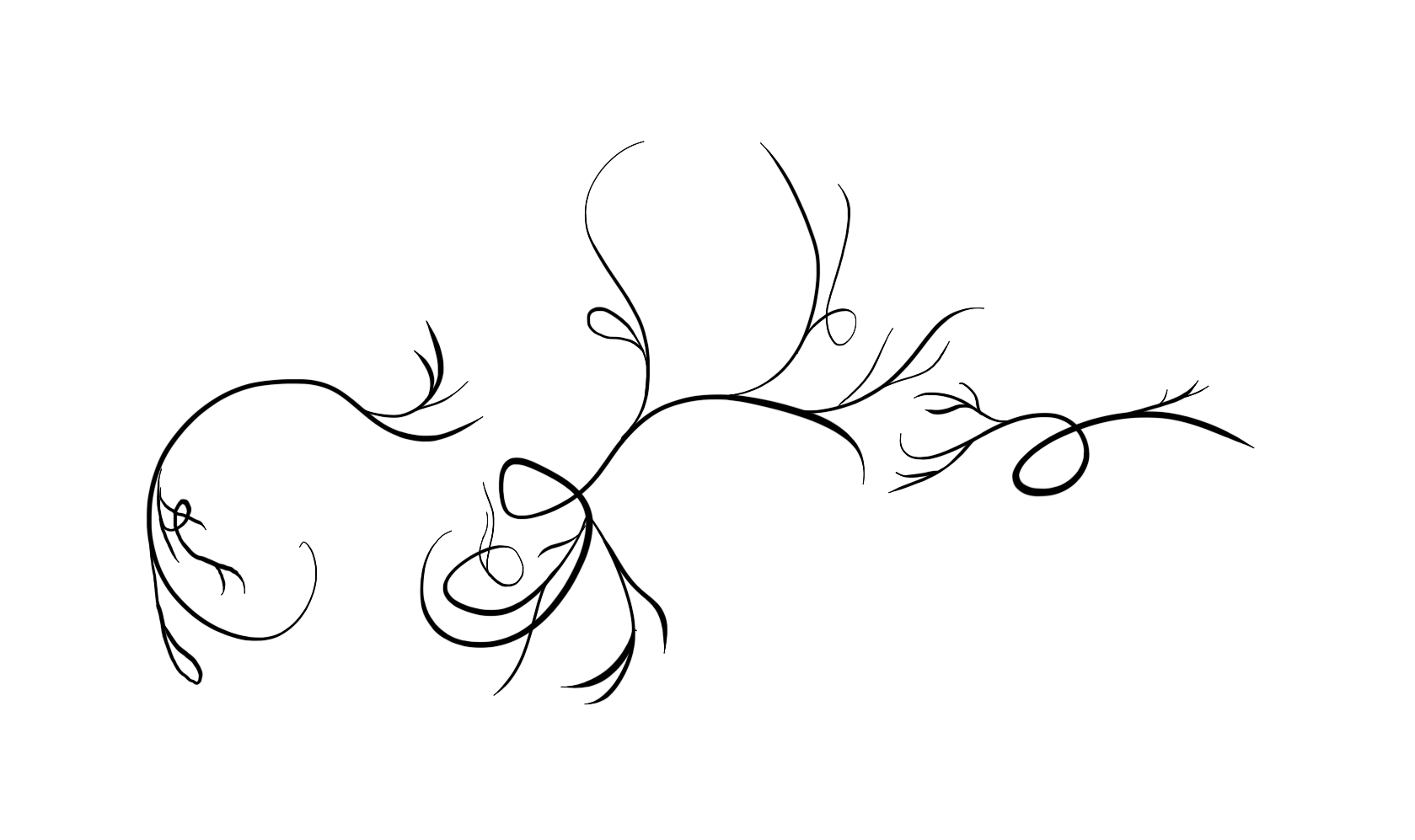
As you can see, loops in vowels can be ornamental, but loops in consonants are not.
Additionally, in compound nouns, loops serve as hyphens.
Where there are multiple consonants in the onset or the coda of a syllable, they are evaluated left-right, top-bottom.
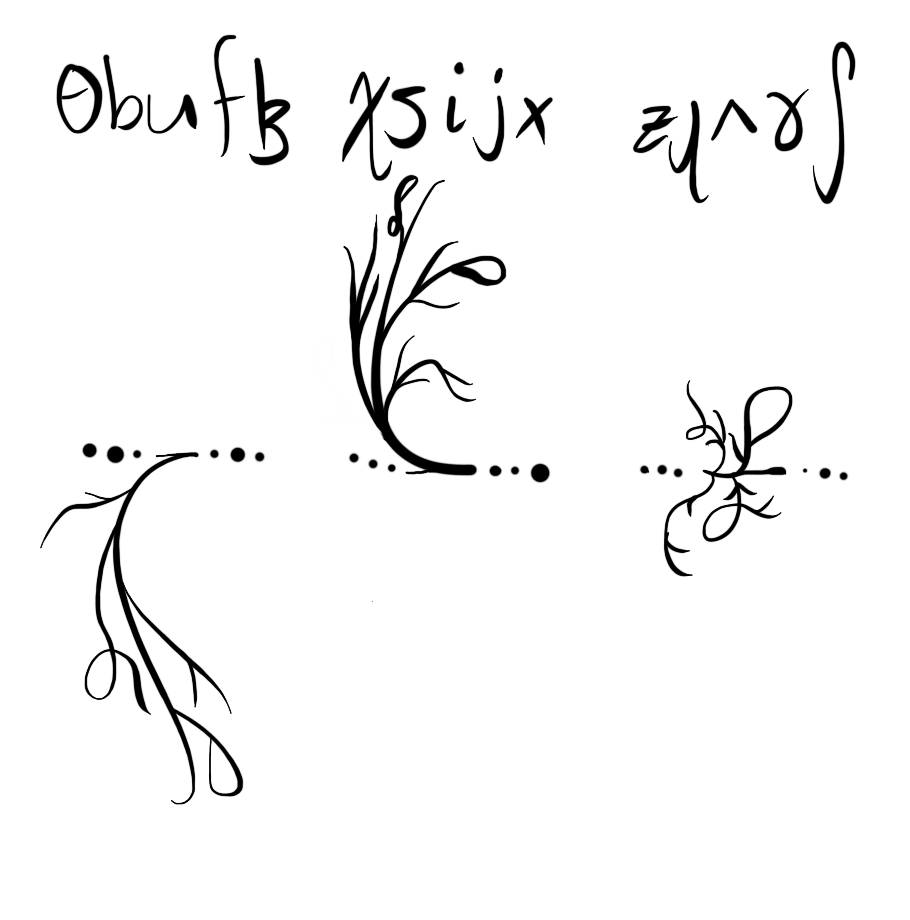
This example is nonsense (for now), and a bit cramped, but you can see how on u or i, the top consonant precedes the bottom, and on the o, the left precedes the right.
Mandatory: Loops for disambiguating vowel clusters
Sometimes lone “o” appears in words, for example the name “huoxin” hu+o+xin.
To disambiguate the bare “o”, use two loops in the vowel line. below: huoxin vs. huxin.
The small, straight lines here are a shorthand for drafting.
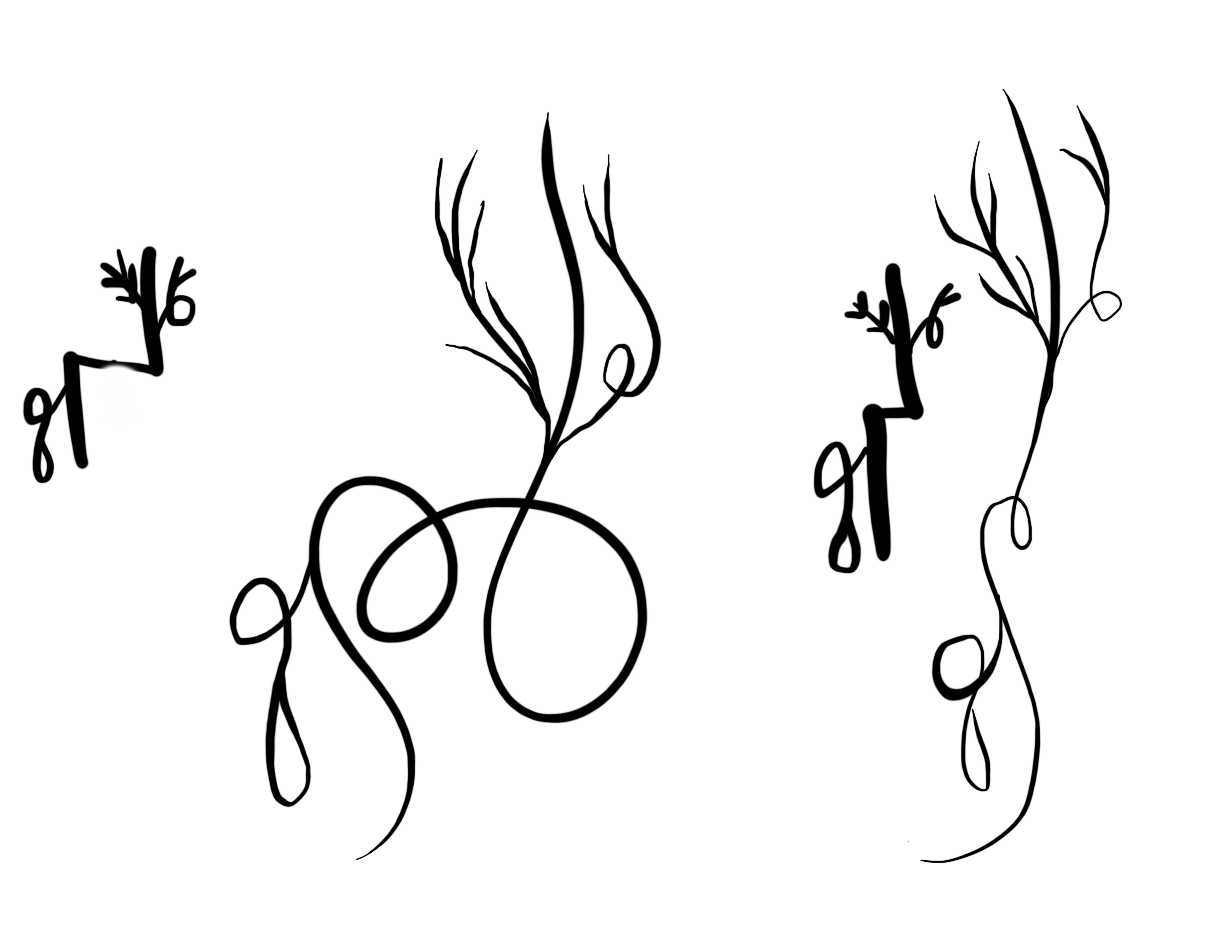
Optional: Capping consonants
When a word begins or ends with one consonant, the consonant can cap the vowel rather than branching off it, unless that consonant is b or p.
Style 1: Uncapped
gorn hupznuso h3unbdyo
organization_natural human-female-GEN gorge-PTCP.PAST.PASS
Order of the Bloated Woman (from Masks of Nyarlathotep, Shanghai chapter.)
[ IMAGE PENDING REDRAW ]
Note the ornamental loops in each word. Technically, it is ambiguous with ogorno hupsoniso hZunbokub, but thankfully, that means nothing. Be advised that you may wish to double-check whether your ornamental loops create unintended - or intended - double meanings.
Style 2: Capped
yolsir
child-ACC
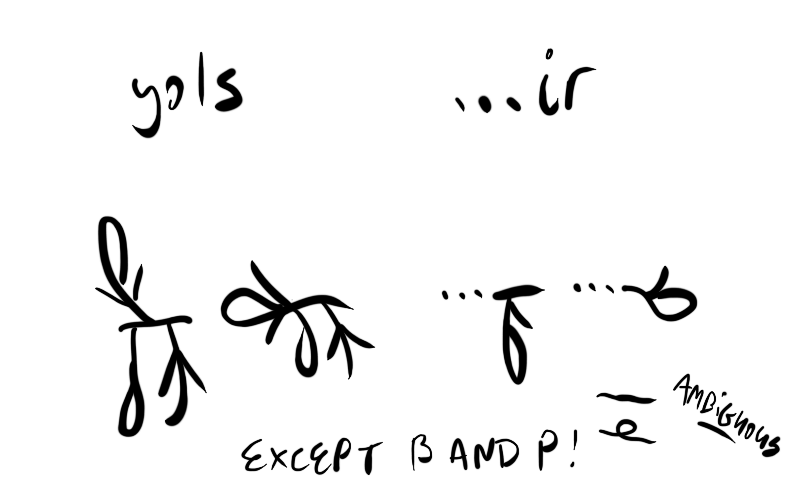
Optional: Vowel stacking
In longer words, sometimes you observe many subsequent o’s. In these cases, you may “stack” the horizontal segments for aesthetic purposes:
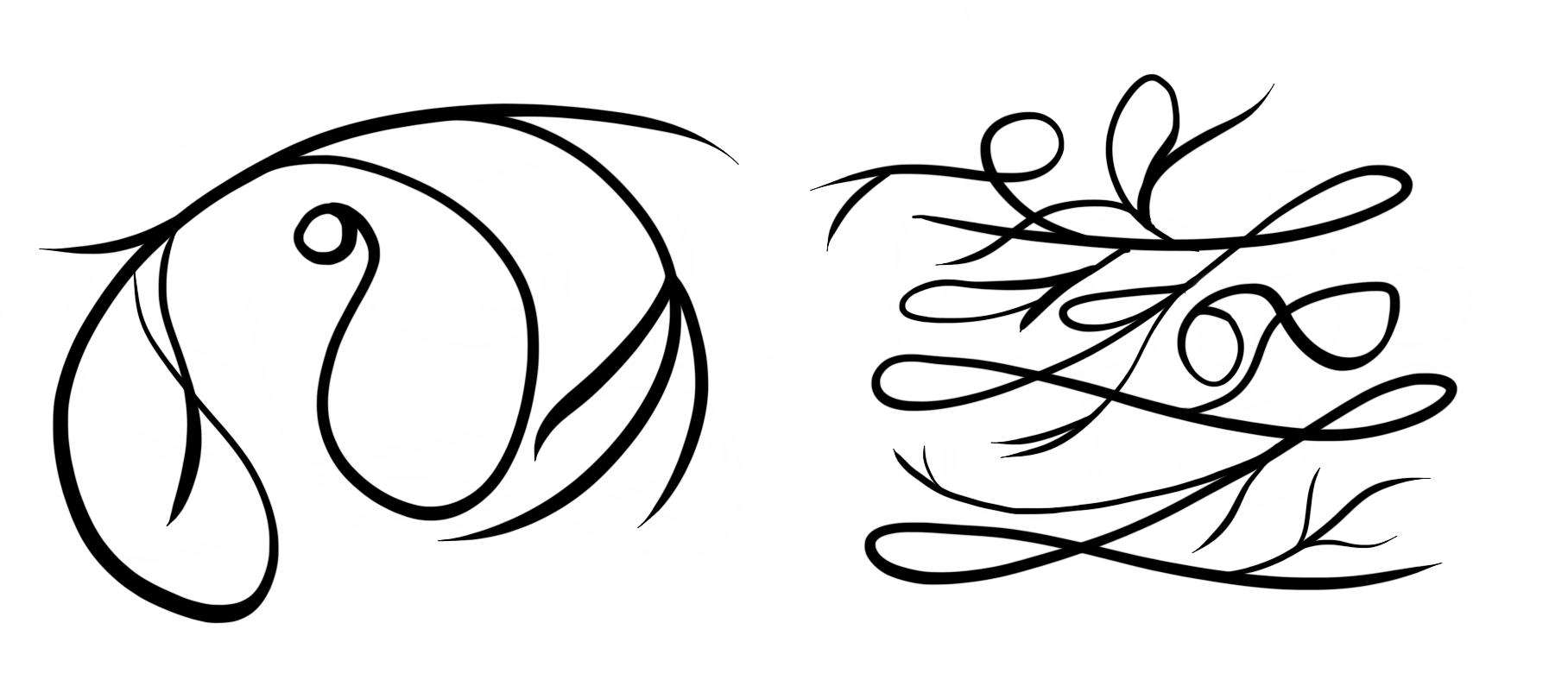
yols nyorloshotopso
child nyarlathotep-GEN
child of Nyarlathotep. (not Nyarlathotep’s child - subtle difference!)
If your long word with many o’s also has u’s or i’s, make sure they are vertical, to avoid confusion:
[ IMAGE PENDING REDRAW ]
golololzonpzuv3
infinite-NMLZ.DER-PROL
Note the lack of a loop on the last syllable of golololzonpzuv3 - a loop would make the bottom horizontal read as lzofoib.